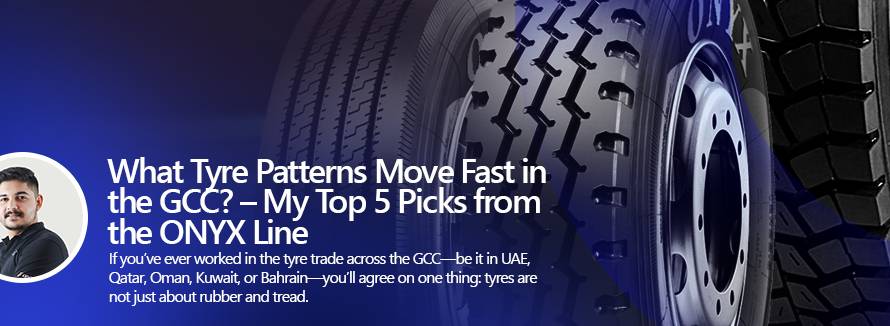What Is Tyre Rotation and Why Does It Matter?
When was the last time you truly thought about your tyres?
For many drivers, tyres are overlooked until a problem arises. Yet there’s one simple, often neglected practice that can drastically improve tyre performance, safety and cost-efficiency—tyre rotation.
As a global leader in B2B tyre sourcing and fleet solutions, we believe it’s essential to educate our partners, dealers and drivers on how small habits create long-term impact.
What Exactly Is Tyre Rotation?
Tyre rotation is the process of systematically changing the position of each tyre on your vehicle at recommended intervals. Typically, the front tyres are moved to the rear and vice versa, sometimes swapping sides depending on the tyre type and vehicle configuration.
But why rotate? Because tyres do not wear evenly—and that imbalance affects performance, safety and value.
Why Tyres Wear Unevenly
Every tyre on your vehicle experiences unique stress. In front-wheel-drive vehicles, the front tyres handle steering, braking and most of the engine load—leading to faster wear. Rear tyres, on the other hand, often wear slower.
Driving style, road conditions, vehicle load and cornering also contribute to uneven tread wear. If left unaddressed, this imbalance can lead to early tyre replacement, reduced handling control and even higher fuel consumption.
Top Benefits of Tyre Rotation
✔️ Extended Tyre Lifespan
Even wear across all tyres means you maximize the usable life of your entire set.
✔️ Enhanced Road Safety
Rotated tyres maintain consistent traction and braking performance, especially critical in wet or slippery conditions.
✔️ Improved Fuel Efficiency
Even tread wear reduces rolling resistance, helping your engine work more efficiently and saving fuel in the long run.
✔️ Cost Savings
Delaying full tyre replacement and improving fuel economy results in tangible savings for both everyday drivers and fleet operators.
How Often Should Tyres Be Rotated?
Most automotive experts recommend tyre rotation every 8,000 to 10,000 kilometers, or approximately every 6 months. However, your vehicle’s owner manual may suggest a rotation pattern based on tyre size, drivetrain, or specific wear patterns.
Pay attention to these warning signs:
- Visible uneven wear on a single tyre
- A “pulling” sensation while steering
- Increased road noise or vibration
Can You Rotate Tyres Yourself?
Technically, yes. With the right tools, jack stands and experience, tyre rotation is possible at home. However, we strongly advise that tyre rotation be performed by professionals. Certified tyre service centers not only rotate tyres properly but also check for alignment, tread depth, inflation and hidden issues during inspection.
Final Thought: Small Habit, Big Results
Tyre rotation isn’t a luxury—it’s a best practice.
For fleet managers, commercial drivers and everyday vehicle owners alike, this simple maintenance step delivers measurable benefits in safety, efficiency and tyre life. At Trojan, we believe that tyre care is the foundation of road safety and performance.
✅ Take Action Today
The next time your vehicle goes in for service, ask one simple question:
“Have my tyres been rotated recently?”
It’s a question that could save you thousands in the long run. Looking for reliable, high-performance tyre sourcing for your fleet or business?
Partner with Trojan — your trusted global supplier for premium, cost-effective B2B tyre solutions.
Connect with us today.





